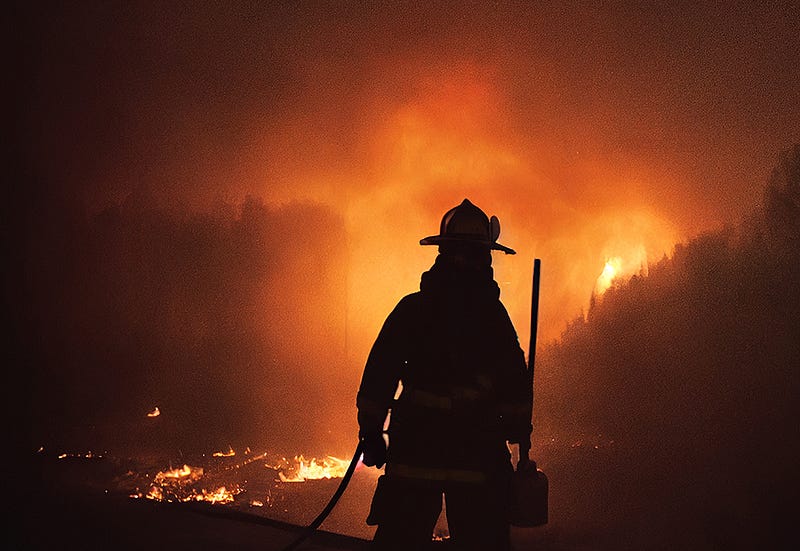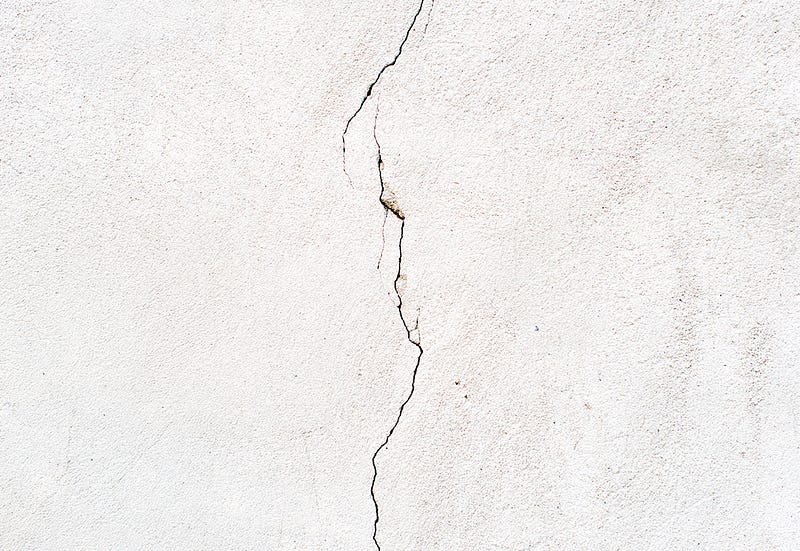Blog
Keep updated with recent real estate news.
Hazards to Watch for When Returning Home After a Wildfire

Wildfires are an all-too-familiar threat for residents of Los Angeles, with the devastation leaving not only charred landscapes but also hidden dangers for those returning home. Every year, wildfires destroy homes, disrupt lives, and impact the health and safety of communities across Southern California. The immediate concern during a wildfire is, of course, ensuring the safety of loved ones and evacuating to a secure location. However, the aftermath of a wildfire can be just as dangerous, with hidden hazards lurking in damaged properties, the surrounding environment, and even the air you breathe. These risks often go unnoticed amidst the urgency to return home and rebuild, yet they can have serious, long-term consequences if not addressed promptly.
Returning home after a wildfire is more than just stepping back into your house?—?it’s a process that requires caution, preparation, and a thorough understanding of potential hazards. From poor air quality to unstable structures and toxic debris, every step must be taken with safety in mind. This guide aims to help you navigate the complex and often hazardous aftermath of a wildfire. By understanding what to look for and how to address these dangers, you can take proactive steps to protect your health, secure your property, and begin the path to recovery with confidence.

Air Quality Hazards
Wildfires release large amounts of smoke, ash, and harmful pollutants into the air, creating health risks that can persist well beyond the fire’s containment. Fine particulate matter (PM2.5) and toxic gases like carbon monoxide (CO) linger in the air, posing dangers to both respiratory and cardiovascular health. In Los Angeles, dry conditions and winds can spread these pollutants far from the burn area, making air quality a critical concern even for those living miles away. Understanding these risks is essential to staying safe when returning home.
Lingering Smoke and Particulate Matter
Wildfire smoke contains fine particulate matter (PM2.5), which can penetrate deep into the lungs and cause respiratory issues, heart problems, and irritation of the eyes and throat. This is especially concerning for vulnerable populations such as children, the elderly, and those with pre-existing health conditions.
Detection Methods:
- Use an air quality monitor to check indoor and outdoor air quality levels.
- Refer to local air quality reports from resources like AirNow or state environmental agencies.
- Be alert to symptoms like coughing, shortness of breath, or eye irritation.
Carbon Monoxide (CO) Risk
Carbon monoxide levels can rise in areas where ventilation is poor, especially if smoldering debris is present.
Detection Methods:
- Install or use a portable carbon monoxide detector.
- Avoid entering enclosed spaces until air circulation is restored and potential CO sources are cleared.

Structural Hazards
Wildfires can severely weaken buildings and infrastructure, creating significant risks for those returning home. Heat and flames can compromise structural components like walls, roofs, and foundations, even if the damage isn’t immediately visible. Additionally, hazards like downed power lines and damaged gas lines may pose threats, making it crucial to assess your property carefully before re-entering. Taking precautions can prevent accidents and ensure your safety during the recovery process.
Compromised Buildings
Intense heat from wildfires can damage structural components like roofs, walls, and foundations, making them prone to collapse.
Detection Methods:
- Conduct a visual inspection from a safe distance. Look for cracks, leaning walls, and sagging roofs.
- Hire a professional inspector to assess the stability of your home before re-entering.
Electrical Hazards
Downed power lines, exposed wiring, and damaged electrical systems can create risks of electrocution or fire.
Detection Methods:
- Check for visible wires on the ground or near your property.
- Contact your utility provider to inspect and restore power safely.
Gas Leaks
Wildfires can damage gas lines, leading to leaks that pose fire and explosion risks.
Detection Methods:
- Use a gas detector to identify leaks.
- If you smell gas or hear a hissing sound, leave the area immediately and contact your gas provider.

Environmental Hazards
The aftermath of a wildfire often leaves behind toxic debris and environmental contamination that can pose serious health and safety risks. Burned materials may release hazardous chemicals, while ash and soot can contain heavy metals like lead or arsenic. Additionally, firefighting efforts can lead to water and soil contamination, making it vital to address these hidden dangers when returning home.
Asbestos Exposure
Older homes may contain toxic asbestos in materials such as insulation, roofing, or flooring. Wildfire heat can disturb these materials, releasing harmful fibers into the air.
Detection Methods:
- Avoid disturbing ash or debris, which could release asbestos fibers.
- Hire licensed professionals to test for and remove asbestos safely.
Toxic Ash and Debris
Ash from burned materials may contain heavy metals like lead and arsenic, posing health risks upon contact or inhalation.
Detection Methods:
- Wear protective gear, including masks and gloves, when near debris.
- Have soil and ash samples tested by environmental labs.
Contaminated Soil and Water
Runoff from ash and debris can contaminate local water supplies and soil.
Detection Methods:
- Test water quality using professional kits or services.
- Observe changes in water color, smell, or taste, which may indicate contamination.
Biological Hazards
Wildfires can create conditions that encourage biological hazards like mold growth and pest infestations. Damp environments from firefighting efforts can foster mold, while displaced wildlife and insects may seek shelter in damaged homes. These hazards can pose health risks and should be addressed promptly to ensure a safe living environment.
Mold Growth
Water used during firefighting efforts can create damp conditions, leading to mold growth in homes.
Detection Methods:
- Inspect damp areas, walls, and ceilings for visible mold or a musty smell.
- Use mold testing kits or consult professionals for thorough inspections.
Pest Infestation
Displaced wildlife, rodents, and insects may seek shelter in your home after a wildfire.
Detection Methods:
- Look for signs of pests, such as droppings, gnaw marks, or nests.
- Listen for unusual sounds like scratching or scurrying.
Spoiled Food
Power outages caused by wildfires can lead to food spoilage, increasing the risk of foodborne illness.
Detection Methods:
- Check refrigerator and freezer contents for discoloration, odor, or thawed items.
- Discard any perishables that have been without power for more than 4 hours.
How to Detect Post-Wildfire Hazards
Detecting post-wildfire hazards involves a combination of careful observation, specialized tools, and professional assessments. Air quality monitors, gas detectors, and mold test kits can help identify immediate dangers, while structural and environmental risks often require inspection by licensed experts. Taking these steps ensures a safer return home.
- Air Quality Monitors: Measure particulate matter and carbon monoxide levels.
- Gas Detectors: Identify leaks before re-entering your property.
- Mold Testing Kits: Check for hidden mold in damp areas.
- Environmental Testing Labs: Analyze soil, water, and debris for contaminants.
- Home Inspection Services: Assess structural stability and electrical safety.

Safety Tips for Returning Home
- Wear Protective Gear: Use N95 masks, gloves, and sturdy shoes.
- Ventilate Your Home: Open windows and doors to improve air circulation.
- Avoid DIY Cleanup: For toxic debris or asbestos, hire certified professionals.
- Inspect Utilities: Have gas, water, and electricity professionally assessed.
- Document Damage: Take photos and videos for insurance purposes before cleanup.
Final Thoughts
Wildfires leave behind more than just visible destruction?—?they create a complex web of hidden dangers that can pose serious risks to health and safety. From lingering air pollutants and compromised structures to toxic debris and biological hazards, the aftermath of a wildfire requires careful attention and planning. Recognizing these hazards and knowing how to detect them is essential to ensuring your safety and well-being as you return home.
By taking proactive measures such as monitoring air quality, conducting structural assessments, and consulting professionals for environmental testing, you can minimize risks and focus on recovery. Each step, whether it’s checking for gas leaks, addressing mold growth, or discarding contaminated items, contributes to creating a safe and habitable space for your family.
As Los Angeles continues to face the challenges of wildfire seasons, staying informed and prepared can make all the difference. Prioritize safety, utilize available resources, and approach recovery with caution to protect what matters most?—?your health, your loved ones, and your home.
Resources for Los Angeles Residents
- Los Angeles County Fire Department: Offers post-fire safety guidelines.
- South Coast Air Quality Management District (SCAQMD): Provides real-time air quality updates
- California Office of Emergency Services (Cal OES): Connects residents to recovery resources.
- Environmental Testing: Search for certified laboratories specializing in asbestos, mold, soil, and water testing in your area. Verify their credentials before hiring.



